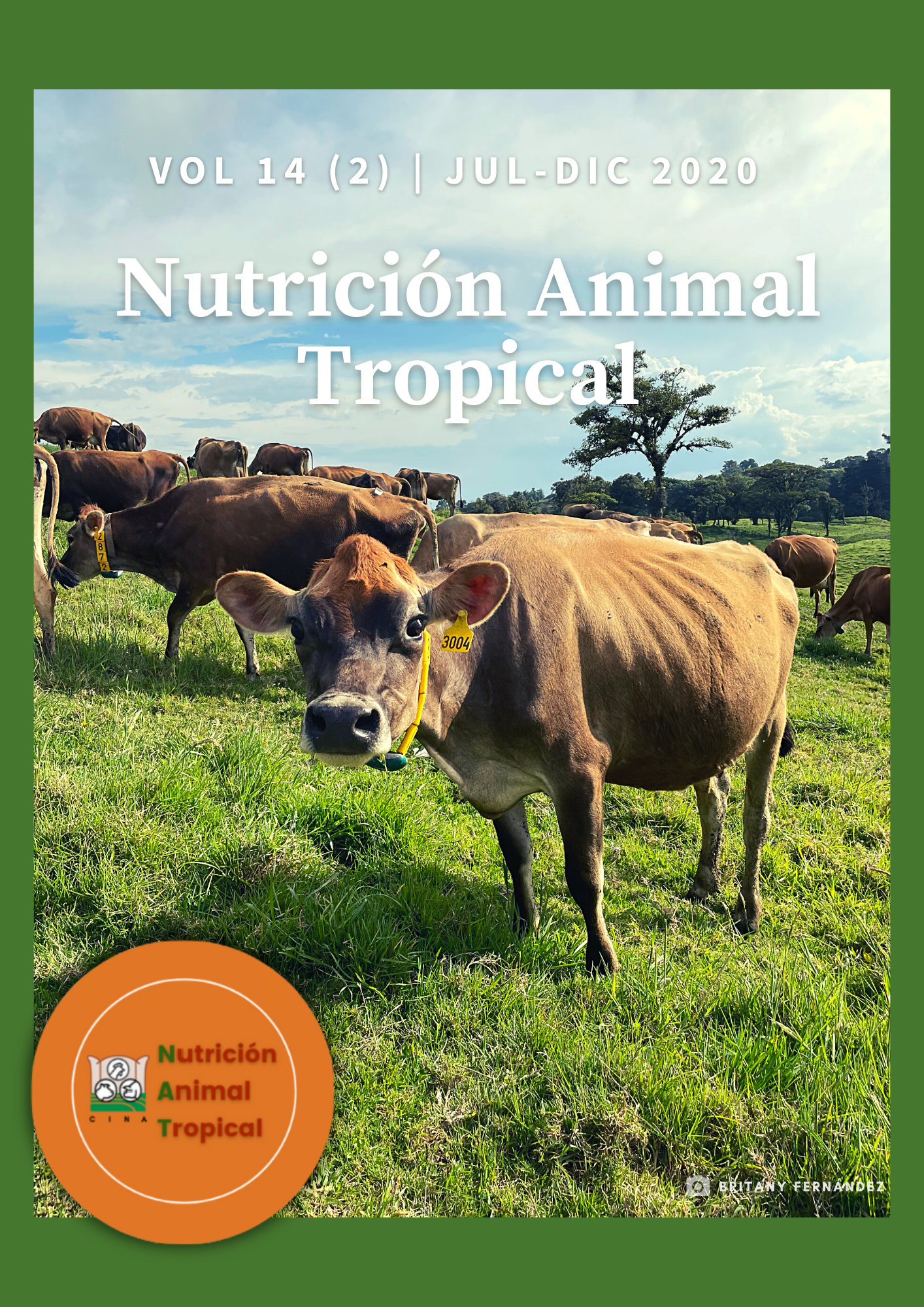Abstract
Protein is an essential nutrient in the diet of dairy cows as it provides amino acids for the animal and, at the same time, supplies nitrogen for the rumen microorganisms; therefore, part of the protein available to ruminants comes from microbial protein and dietary sources. In most feeding situations, microbial protein is the primary source of absorbed AA; however, when large amounts of rumen undegradable protein are fed to the animals, microbial protein may not be the primary source. Metabolizable protein is the true protein absorbed as amino acids by the intestine and supplied by microbial protein, endogenous protein and dietary protein that escapes degradation in the rumen. Normally, the concept of crude protein is used; however, this can incur in excess protein that, in addition to being expensive, can cause problems to the animal and the environment, thus the objective of this document is to present an extract of the methodology used by the NRC (2001) model to determine metabolizable protein requirements in dairy cattle. Within the steps, it is required to calculate the maintenance requirement that includes urinary endogenous nitrogen (N), scurf N, fecal metabolic N and endogenous N, and the requirement for milk production. To determine the metabolizable protein contribution of the ration, it is necessary to calculate the amount of total digestible nutrients (TDN) supplied in the ration. Despite the fact that many years have passed since the publication of the nutrient requirements of dairy cattle, and that there are computer programs that perform these calculations, it is intended to detail the way in which the calculations are carried out to make this information more accessible to potential users in Costa Rica and Latin America.
References
Araya, M. (2002). Valor nutritivo de los subproductos de la industrialización del trigo, arroz y pan de devolución utilizados en la alimentación del ganado lechero en Costa Rica. Tesis de licenciatura. Universidad de Costa Rica. Costa Rica.
Burroughs, W., Trenkle, A.H., & Vetter, R.L. (1971). Some new concepts of protein nutrition of feedlot cattle (metabolizable protein and metabolizable amino acids). Veterinary Medicine and Small Animal Clinician,66, 238-247.
Cruz, M. (2000). Evaluación de la calidad nutricional y económica de los subproductos agroindustriales fibrosos utilizados por la industria de alimentos para animales en Costa Rica. Tesis de licenciatura. Universidad de Costa Rica. Costa Rica.
Elizondo-Salazar, J.A. (2020). Determinación de la energía en alimentos según el modelo del NRC2001.
Herrera, C. (2002). Evaluación delvalor nutricional de los residuos agroindustriales energéticos altos en humedad utilizados para la alimentación del ganado bovino en Costa Rica. Tesis de licenciatura. Universidad de Costa Rica. Costa Rica.
Keeney, D.R.,& Hatfield, J.L.(2008). The nitrogen cycle:Historical perspective, andcurrent and potential future concerns. In: Nitrogen in the environment: Sources, problems, and management. Hatfield, J.L. and Follett, R.F. (Eds). 2nd edition. Associated Press.
Licitra, G.,Hernandez, T.M., & Van Soest, P.J. (1996). Standardization of procedures for nitrogen fractionation of ruminant feeds. Animal Feed Science and Technology, 57(2), 347-358.
NRC (National Research Council). (2001). Nutrient requirements of Dairy Cattle. 7threv. ed. Washington,DC., USA. National Academy Press.
Schwab, C.G., &Broderick, G.A. (2017). A 100-Year Review:Protein and amino acid nutrition in dairy cows. Journal of Dairy Science,100, 10094-10112.
Schwab, C.G., Huhtanen, P., Hunt, C.W., & Hvelplund, T. (2005). Nitrogen requirements of rattle. In: Nitrogen and phosphorus nutrition of cattle: Reducing the environmental impact of cattle operations. Pfeffer, E., & Hristov, A. (Eds). CABI Publishing. Washington, DC, USA.
Spek, J.W., Dijkstra, J., Van Duinkerken, G., & Bannink, A. (2013). A review of factors influencing milk urea concentration and its relationship with urinary urea excretion in lactating dairy cattle. The Journal of Agricultural Science, 151, 407-423.
Walker, N.D., Newbold, C.J., & Wallace, R.J. (2005). Nitrogen metabolism in the rumen. In: Nitrogen and phosphorus nutrition of cattle: Reducing the environmental impact of cattle operations. Pfeffer, E., & Hristov, A. (Eds). CABI Publishing. Washington, DC, USA.

